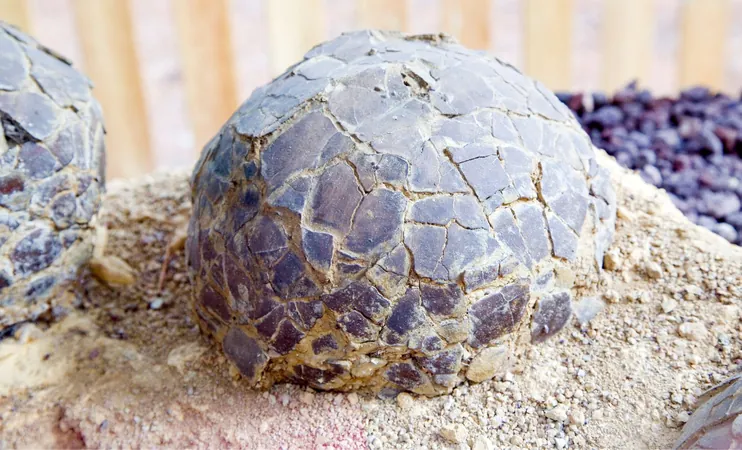
Revelation from Mars: Evidence of an Ancient Carbon Cycle Points to Possible Life!
2025-05-06
Author: Noah
Mars: A Planet of Fascination
For centuries, Mars has captivated our imaginations—its striking resemblance to Earth makes it an irresistible subject of study. This neighboring planet is not only similar in size but also holds a treasure trove of minerals and rocks that often mirror those found on our own planet.
Could Mars Have Been Habitable?
Today, Mars is known for its frigid temperatures, desolation, and lack of liquid water—conditions that seem hostile to life as we know it. However, exciting new theories suggest that, eons ago, Mars was not the barren wasteland we see today, but rather a warmer, wetter world possibly teeming with life.
Uncovering Ancient Clues: The Role of Carbonate Minerals
A groundbreaking study published in 2025 unveils evidence of carbonate minerals on Mars—crucial indicators that carbon dioxide may have once been abundant in the Martian atmosphere. Carbonate minerals are vital as they indicate a history of a warmer climate capable of supporting liquid water, a necessary ingredient for life.
Shaping the Landscape: Evidence of an Ancient Mars
Images captured by orbiters and rovers reveal channels and dry lakes, suggesting that liquid water once flowed across the Martian surface. This intriguing evidence points toward the possibility that ancient Mars had a much thicker atmosphere comprised primarily of carbon dioxide.
Mars Science Laboratory: Discoveries at Gale Crater
The Curiosity rover's recent discoveries at Gale Crater have sent ripples through the scientific community. It has unearthed a wealth of iron-rich siderite minerals, potentially holding pieces of the carbon dioxide that could explain Mars' more hospitable past. Additionally, the detection of iron oxyhydroxides indicates that certain rocks have interacted with water, hinting at a carbon cycle that once thrived.
What This Means for Life
A habitable environment needs more than just liquid water; it requires essential nutrients and an energy source. The evidence gathered from Gale Crater suggests that ancient Mars could have fit the bill. But if life did exist, how can we find proof?
Searching for Biosignatures
Microscopic life forms leave behind elusive evidence called biosignatures, detectable in rock and soil samples. While the current rovers have identified potential organic molecules, distinguishing between life’s fingerprints and chemical processes from nonliving sources is a daunting task.
Sample Collection Strategy: The Mars 2020 Perseverance Rover
In a bold move, the Mars 2020 Perseverance rover has begun collecting and sealing samples, ensuring that they can be analyzed back on Earth. These samples hold potential clues to the history of Mars, from volcanic activity to the existence of ancient life forms.
The Future of Mars Exploration
With an array of data and samples from Mars, scientists stand on the brink of groundbreaking discoveries. Bringing Martian rocks and soil back to Earth could unlock profound insights into whether life ever existed on our neighboring planet, ultimately reshaping our understanding of life beyond Earth.









 Brasil (PT)
Brasil (PT)
 Canada (EN)
Canada (EN)
 Chile (ES)
Chile (ES)
 Česko (CS)
Česko (CS)
 대한민국 (KO)
대한민국 (KO)
 España (ES)
España (ES)
 France (FR)
France (FR)
 Hong Kong (EN)
Hong Kong (EN)
 Italia (IT)
Italia (IT)
 日本 (JA)
日本 (JA)
 Magyarország (HU)
Magyarország (HU)
 Norge (NO)
Norge (NO)
 Polska (PL)
Polska (PL)
 Schweiz (DE)
Schweiz (DE)
 Singapore (EN)
Singapore (EN)
 Sverige (SV)
Sverige (SV)
 Suomi (FI)
Suomi (FI)
 Türkiye (TR)
Türkiye (TR)
 الإمارات العربية المتحدة (AR)
الإمارات العربية المتحدة (AR)